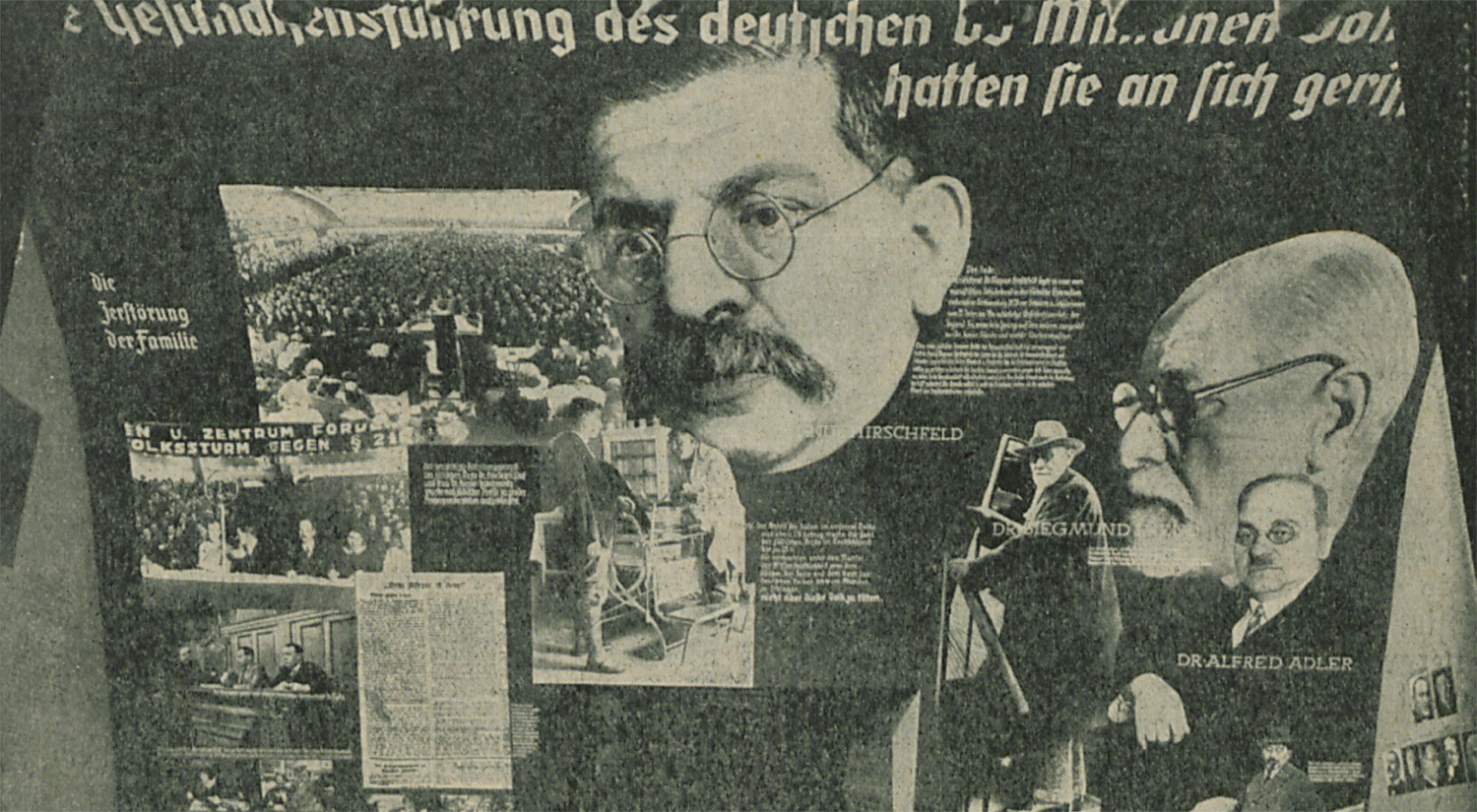Nazi exhibitions are largely known for their role in attacking modern art. What is less well known is that many shows – from exhibitions celebrating economic achievements to those promoting antisemitism – served as sites of formal experimentation for artists, architects and graphic designers to draw upon and reconfigure modernist ideas and practices.
In Nazi Exhibition Design and Modernism, the most comprehensive book ever written on the subject, Dr Tymkiw argues that a central motivation behind this experimentation was an interest in provoking ‘engaged spectatorship’.
This term describes the wide-ranging attempts to design exhibitions in ways that encouraged visitors to take part in different forms of social and political change: for example, by working harder as part of the Four Year Plan, or by supporting the escalation of anti-Semitic legislation and violence.







